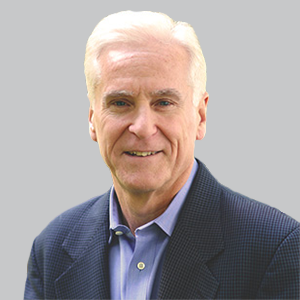Article
Pitolisant Offers Advantages In Narcolepsy Treatment
Author(s):
The chief medical officer at Harmony Biosciences discussed the takeaways from a number of data presentations of pitolisant’s efficacy and safety from World Sleep 2019.
Jeffrey M. Dayno, MD, chief medical officer, Harmony Biosciences

Jeffrey M. Dayno, MD
At the World Sleep 2019 meeting in Vancouver, Canada, data were presented for the for its recently FDA-approved pitolisant (Wakix®, Harmony Biosciences), in an oral presentation and a number of posters, highlighting its abuse potential and efficacy in high-burden patients with narcolepsy, as well as safety data.1
Thus far in clinical trials, the treatment has shown great potential, with data from HARMONY 1 and HARMONY 1bis showing statistically significant improvements in excessive daytime sleepiness over a 3-week titration period and a 5-week stable dose phase.2 As well, pooled safety data from 4 placebo-controlled trials of more than 300 patients suggesting it was generally safe and well-tolerated, with an overall incidence of AEs in the dataset of 49.4%, compared to 41.2% with placebo.3
To find out more about the histamine H3 receptor-antagonist/inverse agonist, NeurologyLive inquired with Jeffrey M. Dayno, MD, chief medical officer, Harmony Biosciences, about the main takeaways from these data.
NeurologyLive: What should clinicians take away from the pitolisant combination therapy data?
Jeffrey M. Dayno, MD: The main takeaways from this poster and these data are the following: In a formal pharmacokinetic interaction study between pitolisant and 2 of the most commonly prescribed narcolepsy medications (modafinil and sodium oxybate), there were no clinically relevant PK interactions between pitolisant and these medications; therefore, no dosage adjustments would be necessary to either pitolisant or these other medications when using pitolisant concomitantly with either modafinil or sodium oxybate.
Also, in a phase 3 long-term, open-label, real-world study, pitolisant demonstrated maintenance of effect out to 1 year on improvement in wakefulness (as measured by the ESS) when used as monotherapy, as well as incremental benefit on wakefulness when used concomitantly with traditional stimulants, wake-promoting agents, and/or anti-cataplectic medications (sodium oxybate, SSRIs, SNRIs). Therefore, pitolisant can be used in many different scenarios and for many different patient types when managing adult patients with narcolepsy.
Are there any unique properties to its use in this fashion?
Yes, pitolisant is a first-in-class medication with a novel mechanism of action. It is a selective histamine 3 receptor antagonist/inverse agonist that works by increasing the synthesis and release of histamine, an important wake-promoting neurotransmitter in the brain. Therefore, while stimulants and wake-promoting agents work mainly through dopamine and norepinephrine, and sodium oxybate works as a CNS depressant, pitolisant is unique in that it works mainly through histamine to improve wakefulness. This is important because, since polypharmacy is common when treating patients with narcolepsy, pitolisant offers a different MOA that can be used rather than adding on another agent that works through dopamine and norepinephrine. Another important implication of its MOA is that pitolisant does not increase dopamine levels in the ventral striatum, including the nucleus accumbens, and it is the first and only product approved by the FDA for patients with narcolepsy that is not scheduled as a controlled substance by the DEA.
Is pitolisant particularly exceptional in any subgroups?
In a poster presented at World Sleep 2019, “Efficacy of Pitolisant in Patients with High Burden of Narcolepsy Symptoms,” pitolisant demonstrated effectiveness versus placebo and a significant improvement in both excessive daytime sleepiness (EDS) and reduction in cataplexy in the subgroup of patients from two of the pivotal studies who had high levels of EDS (ESS > 16) or a high frequency of cataplexy (>15 attacks/week) at baseline. Another aspect of pitolisant that is special, especially in patients who may have a history or be at risk for substance abuse, is its non-scheduled status, being the first and only product approved by the FDA for patients with narcolepsy that is not scheduled as a controlled substance by the DEA.
What are the biggest burdens in narcolepsy? Can pitolisant address any of them?
Narcolepsy is a chronic/lifelong, debilitating neurologic disorder occurring in up to 200,000 Americans that is primarily characterized by excessive daytime sleepiness (EDS) manifesting as the irrepressible need to sleep, which may result in unintended naps, other symptoms of REM dysregulation such as cataplexy, sleep paralysis, hallucinations, and disturbed nighttime sleep.
Narcolepsy imposes a substantial burden on many aspects of life, including school, work, social activities, and relationships. Physicians may overestimate the degree to which patients’ symptoms are controlled; however, in a survey of patients (n = 200) and healthcare providers (n = 251)—the results of which were presented at World Sleep 2019—both patients and physicians agreed that there is a need for new, effective treatment options for the management of narcolepsy.
Wakix is the first and only treatment approved for patients with narcolepsy that is not scheduled as a controlled substance by the DEA. All other products currently approved for adult patients with narcolepsy in the US are scheduled as controlled substances by the DEA.
Transcript edited for clarity.
REFERENCES
1. Harmony Biosciences To Present Clinical Data On WAKIX® (pitolisant) At Upcoming World Sleep 2019 [press release]. Plymouth Meeting, PA: Harmony; Published September 16, 2019. prnewswire.com/news-releases/harmony-biosciences-to-present-clinical-data-on-wakix-pitolisant-at-upcoming-world-sleep-2019-300918558.html. Accessed September 30, 2019.
2. Harmony Biosciences presents 5-year data on pitolisant at international narcolepsy symposium [news release]. Plymouth Meeting, PA: Harmony Biosciences; September 11, 2018. harmonybiosci­ences.com/newsroom/harmony-biosciences-presents-5-year-data-on-pitolisant-at-international. Accessed September 30, 2019.
3. Scart-Grès C, Momah C, Roy M, Maski K, Piris S, Bogan RK. Sleep. 2019;42(Suppl 1):A244—A245. doi: 10.1093/sleep/zsz067.612. Presented at: SLEEP 2019. June 8-12, 2019; San Antonio, TX. Abstract 0614.





